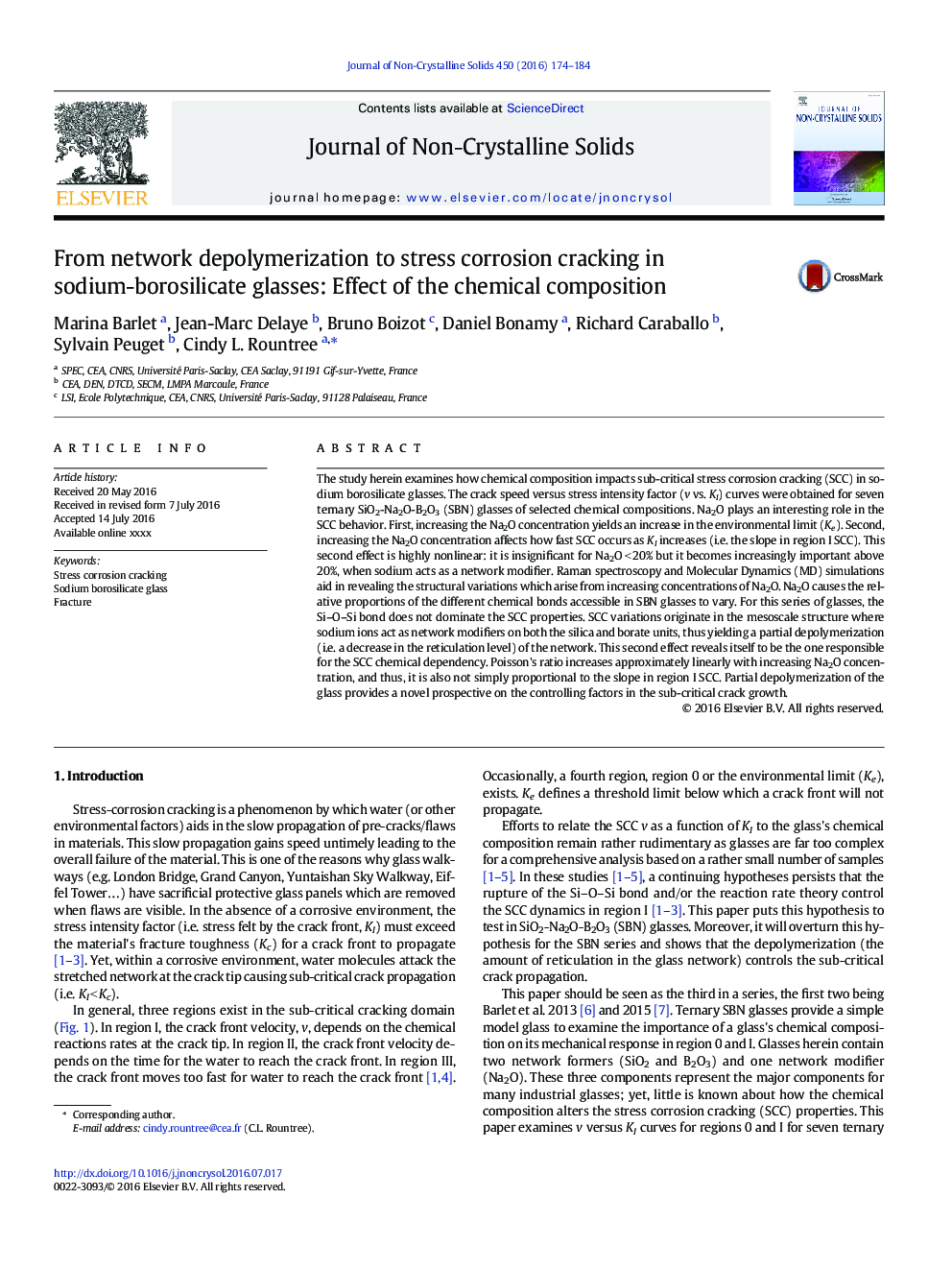| کد مقاله | کد نشریه | سال انتشار | مقاله انگلیسی | نسخه تمام متن |
|---|---|---|---|---|
| 1480130 | 1510396 | 2016 | 11 صفحه PDF | دانلود رایگان |
• Stress Corrosion Cracking (SCC) response of sodium borosilicate glasses as a function of their chemical composition.
• Increasing the sodium concentration causes the glasses environmental limit (Ke) to shift to higher values.
• When [Na2O] exceeds a critical value, Na+ ions act as network modifiers on the Si and B networks affecting SCC in Region I.
• Above this critical value, increasing [Na2O] causes depolymerization increasing in the slope in Region I.
The study herein examines how chemical composition impacts sub-critical stress corrosion cracking (SCC) in sodium borosilicate glasses. The crack speed versus stress intensity factor (v vs. KI) curves were obtained for seven ternary SiO2-Na2O-B2O3 (SBN) glasses of selected chemical compositions. Na2O plays an interesting role in the SCC behavior. First, increasing the Na2O concentration yields an increase in the environmental limit (Ke). Second, increasing the Na2O concentration affects how fast SCC occurs as KI increases (i.e. the slope in region I SCC). This second effect is highly nonlinear: it is insignificant for Na2O < 20% but it becomes increasingly important above 20%, when sodium acts as a network modifier. Raman spectroscopy and Molecular Dynamics (MD) simulations aid in revealing the structural variations which arise from increasing concentrations of Na2O. Na2O causes the relative proportions of the different chemical bonds accessible in SBN glasses to vary. For this series of glasses, the Si–O–Si bond does not dominate the SCC properties. SCC variations originate in the mesoscale structure where sodium ions act as network modifiers on both the silica and borate units, thus yielding a partial depolymerization (i.e. a decrease in the reticulation level) of the network. This second effect reveals itself to be the one responsible for the SCC chemical dependency. Poisson's ratio increases approximately linearly with increasing Na2O concentration, and thus, it is also not simply proportional to the slope in region I SCC. Partial depolymerization of the glass provides a novel prospective on the controlling factors in the sub-critical crack growth.
Journal: Journal of Non-Crystalline Solids - Volume 450, 15 October 2016, Pages 174–184
